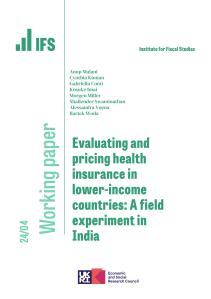Health care spending growth in Japan has accelerated in recent years, unlike in most OECD countries. It is thus important to characterise the structure of recent medical spending using individual-level data. We use medical claim bill data from a citizen's health insurance plan in Japan to examine the concentration in and persistence of medical spending. We find that medical spending is disproportionately distributed across individuals, with the top 10 per cent of spenders responsible for over 60 per cent of total expenditures. We also find a high correlation in spending over time: the top 20 per cent of spenders have a probability of over 60 per cent of remaining in the same rank in the following year. Further, medical spending is more concentrated among those aged 0–64 years than among the older age group. The results also show a difference in income gradient of health expenditures across age groups. Specifically, individuals aged 25–64 in low-income families spend more on medical care than those in high-income families, whereas there is no clear association between income and health expenditures among the elderly. Finally, consistent with previous studies, we find increased medical expenses in the year of death, accounting for 17 per cent of total expenditures among those aged 65 and over.








